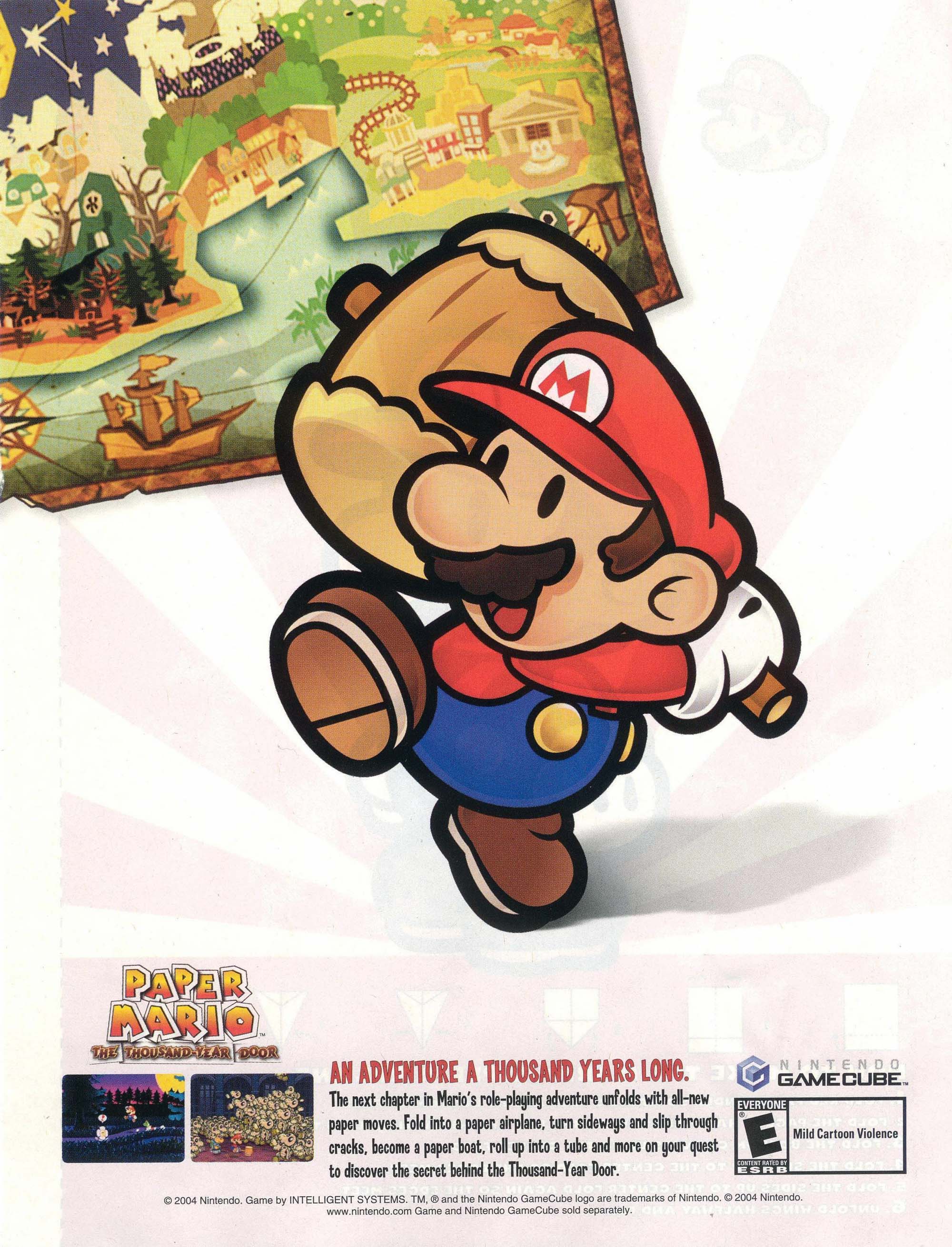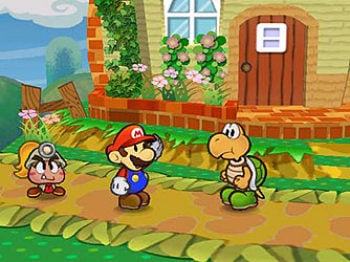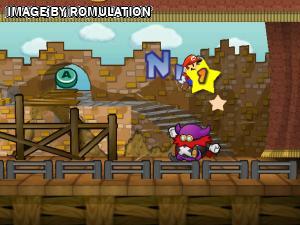

'Paper Mario: The Thousand-Year Door for GameCube Review'. ^ a b c d e f g h i j Kasavin, Greg (November 12, 2004).

^ 'Updated Australian Release List – 31/10/04'.^ Originally released in Japan as Paper Mario RPG ( ペーパーマリオRPG).In 2016, Paper Mario: Color Splash was released on the Wii U. In 2012, Paper Mario: Sticker Star was released on the Nintendo 3DS, becoming the first installment in the franchise on a handheld console.

Super Paper Mario 's plot is unrelated to the story of The Thousand-Year Door, but it contains many Easter eggs referencing characters from the previous two games. It has a stronger emphasis on platforming than its predecessor. Story Ī sequel to the game, Super Paper Mario, was developed by Intelligent Systems and released for the Wii in 2007. The books become best-selling novels that are eventually purchasable through the in-game item shops, though the stories told in the novels greatly exaggerate Luigi's heroics, compared to stories directly told by Luigi's disgruntled partners or even Luigi himself. Ironically, Luigi winds up having his adventures actually printed and published. Mario's younger brother Luigi is an NPC who recounts his slapstick adventures in the Waffle Kingdom, appearing in Rogueport with party members of his own, many of whom do not like Luigi at all for various reasons, juxtaposing the universal respect Mario's partners have for Mario. The main antagonist of the Mario series, Bowser, tries to collect the Crystal Stars before Mario does instead of directly opposing Mario, though his attempts mostly become comedic relief. Princess Peach agrees to teach TEC about love in exchange for the ability to contact Mario via e-mail. Most of Peach's story is spent on her interaction with the X-Naut's computer AI TEC, who falls in love with Princess Peach despite not fully understanding the concept of love. Mario is the main character of The Thousand-Year Door, although the story also rotates between portions where the player plays briefly as Princess Peach and Bowser. More party members are gained as the player advances through the game. Each party member has a specialised skill, some of which are required to solve puzzles to advance progression in the game. Throughout the game, Mario is permanently assisted by a party member. When equipped, these badges can permanently enhance a particular skill or aspect, or, in some cases, give Mario new moves, including Power Jump and Quake Hammer. Each badge requires a certain amount of Mario's badge points (BP) in order to be equipped. Mario can also purchase badges from non-player characters, find them hidden in the environment, or occasionally obtain them from defeated enemies. The effects of these items range from healing Mario or his partner to damaging the opponent. For example, Mario's strength is determined by multiple statistical fields and status-boosting items that can be used in and outside of combat. Outside of battle, the game contains some strong role-playing video game traditions. For every 10 levels, the stage would increase by fifty audience members for a total of 200 after level 30. Conversely, the audience may throw damage-causing items at the player or leave if the player performs poorly in a battle. The battles take place on a stage in front of an audience if the player performs well in a battle, the audience can assist Mario by replenishing star power, throwing helpful items on-stage, or inflicting damage on the opponent.
#Paper mario and the thousand year door rom gamecube upgrade#
Mario can choose to upgrade his heart points (HP), flower points (FP), or his badge points (BP). Defeating enemies awards various numbers of Star Points to Mario for every 100 Star Points, Mario is able to level up. Flower Points-which are required for special moves-are shared among Mario and his party members. If Mario's Heart Points are reduced to 0, however, the game ends and the player must start again from the last saved point. When a partner's heart points are reduced to 0, the partner becomes inactive for the rest of that battle and later battles until recovery. In The Thousand-Year Door, each of Mario's party members now have their own heart points (HP) and may receive any attack that Mario can receive. A similar 'action command' was also used in all released Mario RPG games. The turn-based system, in which players select an attack, defense, or item from a menu, is augmented by timed button presses that can result in substantial attack or defence bonuses when performed correctly. Battles in The Thousand-Year Door borrow elements from Super Mario RPG and the first original Paper Mario game.


 0 kommentar(er)
0 kommentar(er)
